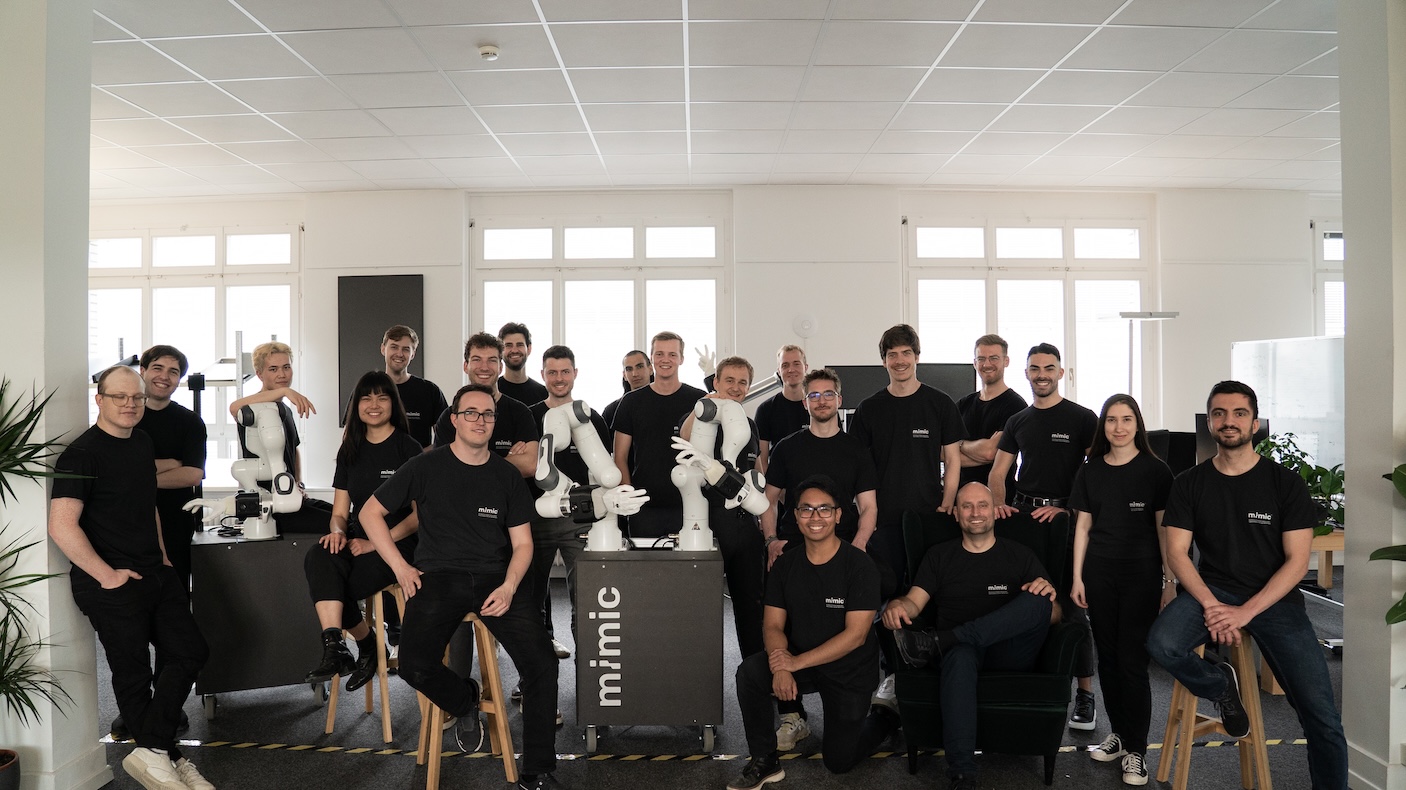5 Takeaways from 2022 for Marketplace Startups
Over the last 12 months, we’ve seen a fundamental shift in the market for public and private marketplace companies. Early-stage entrepreneurs are left asking themselves how to continually build their marketplace business, navigate the market, and meet expectations. So what can founders take away from this past chaotic year?
The most important takeaway is that you should no longer operate as if it is 2021. The market has fundamentally changed, and investors are much more focussed on capital efficiency than they have been over the past 10-plus years. As a result, you’ll notice that fundraising is significantly more challenging. That said, marketplaces are still a key investment area and mega rounds are still happening. And despite all of the doom and gloom, history has shown that recessions are actually a great time to build a successful marketplace business.
During the most recent edition of our annual Marketplace Conference in Berlin, we opened the day with a keynote on the “State of Marketplaces.” This provides a high-level commentary on the rocky market environment that public and private marketplace businesses are in, and mapping out takeaways for early-stage marketplace entrepreneurs dealing with this new reality. Below you can view the video and review the slides we presented during the keynote, offering founders some direction during the challenging months ahead.
The End of Rapid Expansion
The fundamental shift we witnessed over the past year happened against the background of an unusually long bull run for public tech companies coming to an end. The NASDAQ — widely regarded as the world’s leading exchange for tech companies — has been on a tear since the end of the Global Financial Crisis (GFC) in 2008. Until its peak in November 2021, the NASDAQ grew by more than 12x since September 2008, marking a 14-year period of rapid expansion.

During this period, publicly listed marketplace business— displayed by the Marketplace Index¹ — even managed to outperform the NASDAQ, providing marketplace investors with incredible opportunities to return capital. The Marketplace Index currently lists 65 of the world-leading marketplace businesses with a market capitalization exceeding $500 million².

This success for marketplaces did not limit itself to the public realm. On the back of the incredible development of the Marketplace Index, private marketplace businesses flourished and many of them managed to attract financing rounds in excess of $100 million in capital. We saw this momentum come to a head with a number of mega rounds throughout 2021.

Changing Price/Earnings Ratios
However, since the end of last year, the picture for many marketplace businesses has been very different. Driven by various macroeconomic factors — including rising interest rates and US and European economies effectively transitioning into a recession — the NASDAQ lost over 30 percent since its peak in Q4 2021.

In that same period, the Marketplace Index fell even more deeply, losing 42 percent of its value. And although the Index is still performing strongly over a decade-long horizon, the data clearly shows that marketplaces that recently went public have suffered greatly from changing market dynamics. Many of the highly anticipated marketplace companies that IPO’d in 2021 saw their market cap crumble with some — such as Robinhood and Deliveroo — losing close to 90 percent of their value.

Driving this significant reappraisal of tech in general and marketplaces specifically is a return to historic valuation multiples. We find evidence for this when analyzing the development of the Price/Earnings ratio (P/E ratio) for tech companies since the 2000s.
Between 2019 and 2022, the P/E ratio almost doubled compared to the 2008–2018 period and effectively hit a ratio that has not been seen since the dot-com bubble burst in 2003/2004.

This year we’ve seen a significant decline in the P/E ratio, and although still on a high level, it’s clear that public market investors nowadays have a dramatically different take on how to price their assets.
Trickling down into private markets
In the most recent quarters, this reappraisal in public markets trickled down to the private markets of venture capital, resulting in the deployment of significantly less capital and fewer companies receiving funding.
Looking specifically into marketplaces investments, we’ve seen a decline of over 70 percent year-on-year in terms of capital investment and a more than 30 percent drop in financing rounds. As you can derive from the graph below, most of this contraction is happening in the later stages — Series C and beyond — as late-stage investors are grappling to adjust their strategies as a result of the sentiment shift in public markets.

With the various growth stages seeing a drop in financial deployment, preserving cash has become the name of the game for later-stage marketplace companies. Many of them are laying off staff to reduce burn, extend runway, and drive overall capital efficiency.
As examples, we’ve seen Patreon reducing their workforce by 17 percent, and edtech giant Byju recently let go of 2,500 people. Others, such as Instacart and PharmEasy, postponed their IPO plans, citing volatility in the capital markets as their biggest concern.
Takeaways for early stage founders
So what do these seismic changes in the market mean for anyone building a marketplace business? At Speedinvest, we broadly believe entrepreneurs should consider the following five takeaways.
Embrace the new reality
The most important takeaway is that you should no longer operate as if it is 2021. The market has fundamentally changed, and investors are much more focussed on capital efficiency than they have been over the past decade. With that in mind, we encourage you to practice realism. As a single entrepreneur, you have no influence on macro conditions, so you need to work with what you get, and the biggest mistake could be misinterpreting the new reality as a temporary blip.
Currently, the growth-at-all-costs mentality that dominated the last years seems to finally be over. This being the case, many founders, including our own, are questioning how to think about growth versus profitability. We don’t think there’s a one-size-fits-all answer here, but we do believe that the growth versus profitability framework from NFX is helpful.
As an early stage company, your number one priority is still to grow. However, as you mature, you need to show more evidence of a path to profitability. Perhaps initially for specific cohorts, customer segments or geographies, but ultimately across the board and on company level.

Raising money has become harder as capital shifts to standby mode
If you’re out there raising capital right now or are planning to do so in the near future, you’ll realize that fundraising has become significantly harder. As we’ve seen from the numbers above, the amount of capital invested in marketplace businesses has declined significantly over the past 12 months. Even fewer marketplaces — especially across the growth stages — are able to raise any funding at all.
Yet it’s important to note that capital has not dried up. If we look at the amount of dry powder that’s available — i.e. VC capital that’s raised but not yet deployed—we see a huge amount of money waiting to be invested.

VC funds raised more money than ever before in recent years and much of this capital will need to hit the market in the months and years to come. So while fundraising is hard right now, we do believe that we’ll see investment activity pick back up again in the next quarters.
Marketplaces are still a key investment area
On a positive note, and despite the contraction in VC funding we’ve seen in 2022, marketplaces are still one of the largest categories backed by VCs. This year alone, marketplace businesses raised $56 billion in funding, only trailing fintech startups that collectively raised approximately $65 billion.

One of the main reasons for this is that marketplaces and their underlying network effects have been tremendous value drivers over the last decades, resulting in strong investor interest. Five out of the world’s top 10 most valuable companies— Apple, Amazon, Alphabet, Microsoft and Meta — rely significantly on marketplace dynamics when it comes to their business model.
Mega rounds for marketplace businesses are still happening
Another positive observation is that we continue to see investment rounds in excess of $100 million happening in 2022, albeit at a lower rate compared to 2021.
Investors are clearly still interested in backing incredible marketplace businesses. If you’re building a capital-efficient business supported by huge network effects, investors will still be there to support you on your journey regardless of overall VC sentiment. Our Speedinvest portfolio company CoachHub is a good example here. They managed to close a $200 million financing round this past summer.

Recessions are a great time to build a successful business
And finally, despite all the doom and gloom in the world, we want to highlight that many of the world’s greatest marketplace businesses have been built on the back of a crisis or a recession.
Companies, such as Google, Alibaba, and Just Eat emerged from the dot-com bubble. Airbnb, Zalando, and Uber were built at the tail end of the Global Financial Crisis.

In a recent article, famous Benchmark investor and early Uber backer Bill Gurley went so far as to say that “If you are going to build something from scratch, this might be as good a time as you have had in a decade.”
Recessions level the playing field. With less money and speculation in the market, investors fundamentally reward teams building the best companies on the back of capital-efficient business models.
Moreover, there are a number of practical benefits of building your marketplace business during a recession:
- Tough markets typically weed out competitors, making it easier for you to expand and consolidate markets, leveraging the defensibility you build through network effects.
- Hiring tends to become easier, as companies lay off workforces and freeze hiring budgets in a push for more efficiency. This time around, you might be able to hire that great executive you were looking for and probably at a lower cost.
- You’re facing less competition in advertising, increasing the return on your ad spend. It might be cheaper than ever to kickstart a marketplace and build critical mass using paid acquisition
Recessions and crises breed opportunity, and we encourage you to look and find those opportunities to strengthen your marketplace business.
We back marketplace businesses
At Speedinvest, we have a long history of investing in and supporting marketplace businesses. We have invested in winners such as GoStudent, CoachHub, and Shpock. And with the experience of more than 50 marketplace businesses in our portfolio, we are keen to invest in the next generation of category defining marketplaces.
In case you are building an early-stage marketplace business, we would love to get to know you. Connect with our team and leave your pitch here. You can view the presentation below or download it here.
Sources
- The Marketplace Index has been coined by Battery Ventures. We have updated the Index to include publicly listed marketplace companies at the leading stock exchanges, with a market capitalization exceeding $500 million.
- The Marketplace Index currently includes the following companies: Alibaba Group Holding Ltd. ; Netflix, Inc. ; Pinduoduo, Inc . ; JD.com, Inc . ; Airbnb, Inc. ; Booking Holdings Inc. ; Uber Technologies, Inc. ; MercadoLibre, Inc. ; DoorDash, Inc .; Coinbase Global, Inc. ; Coupang, Inc. ; Spotify Technology SA ; eBay Inc. ; DiDi Global Inc. ; Robinhood Markets, Inc. ; Delivery Hero SE; Etsy, Inc. ; Wayfair, Inc. ; Expedia Group, Inc. ; Carvana Co. ; Teladoc Health, Inc. ; Zillow Group, Inc. ; Trip.com Group Ltd. ; GoodRx Holdings, Inc. ; Just Eat Takeaway.com N.V. ; Lyft, Inc. ; Rakuten Group, Inc. ; Farfetch Ltd. ; REA Group Ltd ; Chegg, Inc. ; Fiverr International Ltd. ; Auto Trader Group PLC ; Upwork, Inc. ; iQIYI, Inc. ; Autohome, Inc. ; Angi Inc ; Bumble, Inc. ; Coursera Inc ; TripAdvisor, Inc. ; Shutterstock, Inc. ; ContextLogic, Inc. ; ZipRecruiter, Inc. ; LendingClub Corp ; MakeMyTrip Ltd. ; Yelp Inc ; American Well Corporation ; Eventbrite, Inc. ; Poshmark, Inc. ; Jumia Technologies AG ; Kakaku.com, Inc. ; Opendoor Technologies Inc ; Deliveroo plc ; PT Bukalapak.com Tbk ; AUTO1 Group SE ; Moneysupermarket.com Group plc ; Allegro.eu Societe anonyme ; Zomato Ltd. ; CarGurus, Inc. ; Amazon.com, Inc. ; Meituan ; Zalando SE ; ASOS plc ; Fnac Darty SA ; Newegg Commerce, Inc. ; Sea Ltd. (Singapore)
- Numbers per September 2022













.svg)
